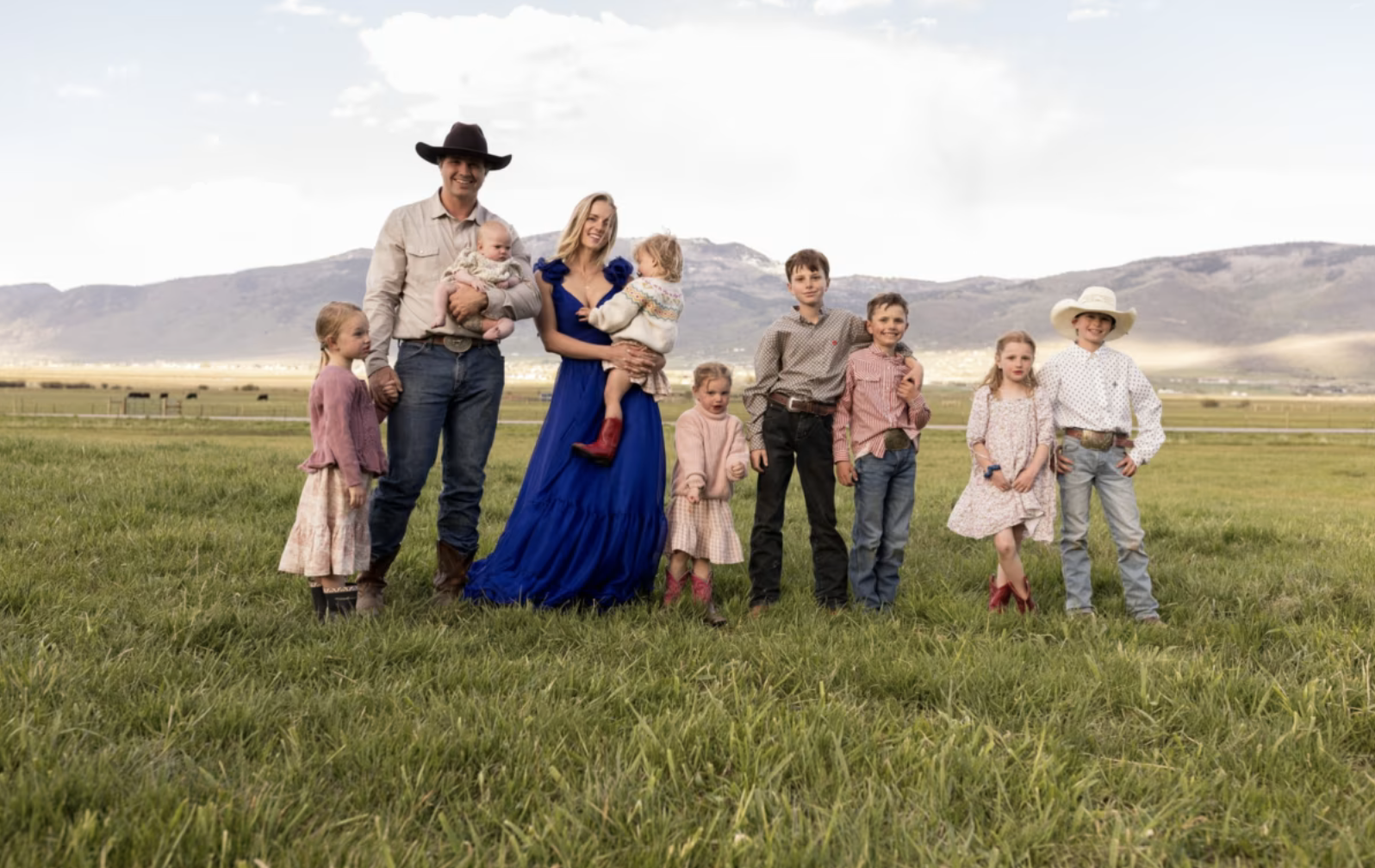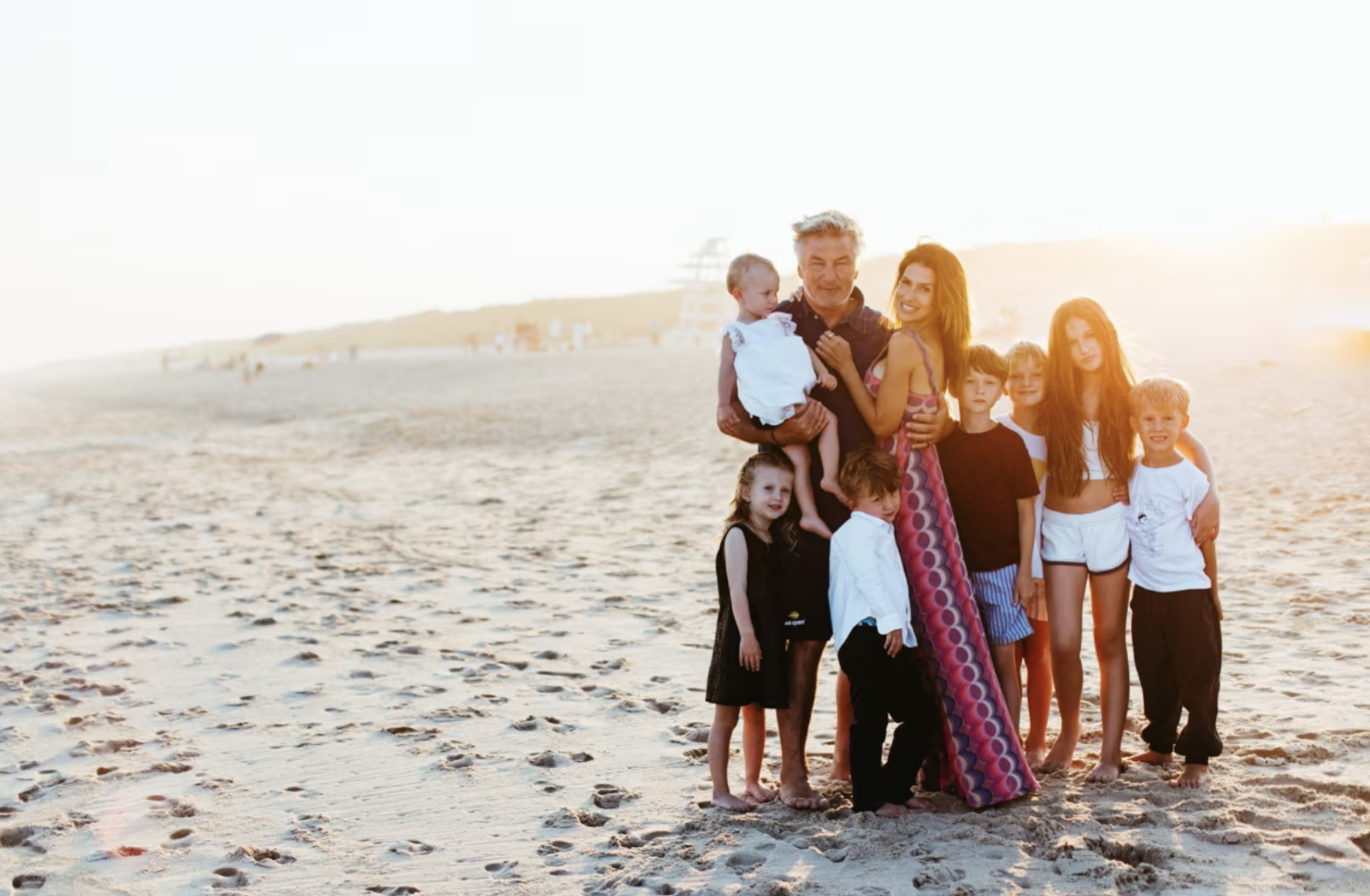Amid rising living costs, shrinking family sizes, and an uncertain future, having many children has become the new symbol of wealth in developed economies.
Eliza Filby, a generational researcher in the US, notes that raising a child comfortably is a significant financial challenge for most couples, especially in cities. According to Filby, many middle-class American families are supporting their children until they are almost 30. "Two children are a stretch, and three or more means you have to be super-rich," Filby said.
Birth rates in many countries have hit record lows. In the UK, the figure is 1.44 children per woman, and in the US, it's 1.6. In some Asian countries like Japan and South Korea, the rates are 1.2 and 0.75, respectively. The replacement fertility rate to stabilize a country's population is 2.1 children per woman.
 |
Hannah Neeleman and her 8 children at their family farm in Salt Lake City, USA. Photo: Corey Arnold/Sunday Times |
Hannah Neeleman and her 8 children at their family farm in Salt Lake City, USA. Photo: Corey Arnold/Sunday Times
The "one-child-is-enough" culture has boomed among the middle class, but at the other extreme, super-rich families are celebrated for their ever-growing broods.
A prime example is the "trad wife" (traditional wife) movement on social media, which glorifies homemaking. Hannah Neeleman, daughter-in-law of the founder of JetBlue Airways, has become a star of the large-family movement. She has attracted 10 million followers on Instagram by sharing her life as a mother of 8. Among celebrities, American actor Alec Baldwin and his wife have also attracted attention with their reality series about life with their 7 children.
Author Wednesday Martin, in her book "Primates of Park Avenue", also observed "huge families everywhere" on the Upper East Side—home to some of the most expensive real estate and schools in America. "Four is the new normal. Five is no longer crazy; it just means you're rich," she wrote.
A Forbes study of 700 American billionaires found that at least 22 have 7 or more children. The most famous is billionaire Elon Musk, with 14 children. The world's richest man is also a strong advocate of pronatalism, considering it essential for humanity's survival.
Luxury brands have been quick to capitalize on this trend: Artipoppe sells velvet baby carriers for 800 USD, dubbed the "Birkin bag for mothers", and designer collections allow the whole family to dress alike.
Brand strategist Eugene Healey explains that luxury brands' focus on family is an attempt to shift to values, as consumers grow weary of material goods.
"You can't fake having a large, prosperous family. It's a very long-term commitment that only the super-rich dare to make," Healey said.
 |
American actor Alec Baldwin, with his wife Hilaria Baldwin and their seven children. Photo: Rou Shoots |
American actor Alec Baldwin, with his wife Hilaria Baldwin and their seven children. Photo: Rou Shoots
However, the status symbol lies not only in the number of children but also in the upbringing and the ability to maintain a certain lifestyle. To achieve this, they require an army of support staff, including nannies, tutors, and housekeepers. For instance, Kim Kardashian reportedly employs 10 nannies working 24/7 for her 4 children, with salaries potentially exceeding 200,000 USD per year.
This version of parenthood doesn't reflect the majority's experience. "It's a version where you still meet your friends, get back in shape after giving birth, and show up at late-night events without looking tired," Healey observed.
Large families also signal confidence in the future. The group that feels most secure is the one with the most money.
Following these families on social media doesn't mean people want to return to the past. Healey believes most of this content is viewed as a form of entertainment, an escape from reality.
"They represent a vision of economic security, clear gender roles. But many people will look at that and think, in the real world of 2025, I don't want that at all," he said.
Minh Phuong (According to Financial Times)












